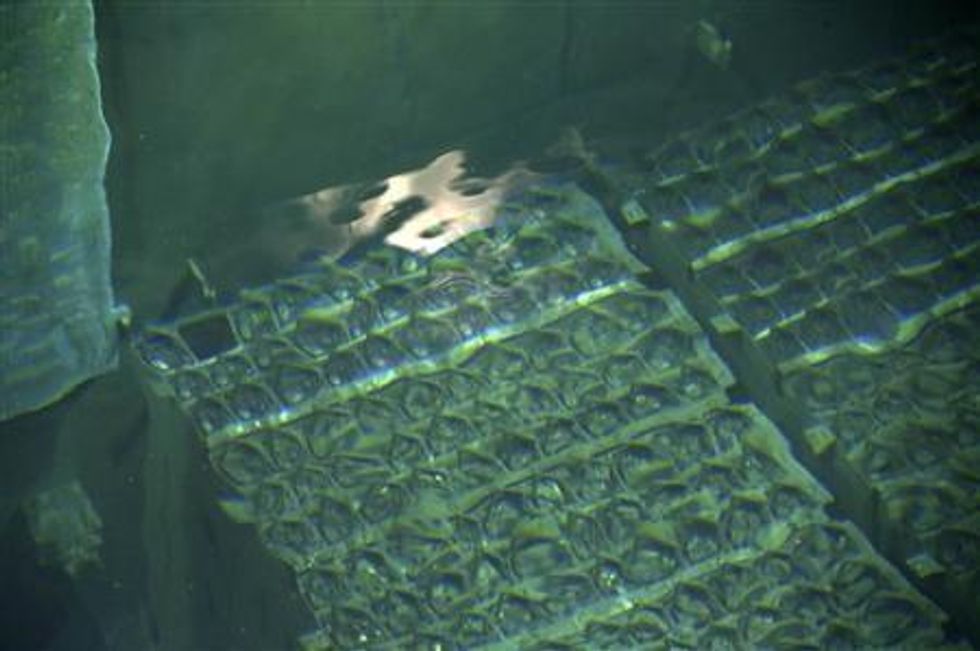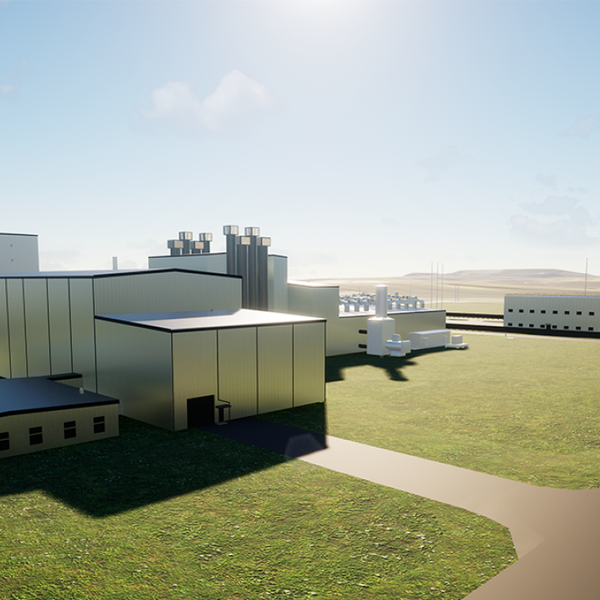'Trust Us': World's Most Perilous Nuclear Operation Set To Begin
With effort to remove fuel rods from Fukushima's Reactor 4 expected any day, few trust TEPCO's assurances

That's how Reuters, quoting former local resident Ichiro Kazawa, concludes their latest reporting on the pending and enormously dangerous operation scheduled to begin inside the crippled Reactor 4 building at the Fukushima nuclear plant.
"Full release from the Unit-4 spent fuel pool, without any containment or control, could cause by far the most serious radiological disaster to date."
As Common Dreams has previously reported, the operation to remove the fuel rods from Reactor 4 has nuclear experts sounding every alarm bell they can find in order to draw attention to the potentially devastating results if something goes wrong with the effort.
And as Kazawa's comments make clear, very few find trust in the promises coming from the plant's owner, the Tokyo Electric Company (or TEPCO).
According to Reuters:
The hazardous removal operation has been likened by Arnie Gundersen, a veteran U.S. nuclear engineer and director of Fairewinds Energy Education, to trying to pull cigarettes from a crushed pack.
When the time comes, extracting spent fuel from the plant's other reactors, where radiation levels are much higher because of core meltdowns, will be even more challenging. Reactors No. 1 and No. 3 sustained heavier damage than No. 4 as a result of the March 2011 earthquake and tsunami that knocked out power and cooling at the Fukushima station, triggering three meltdowns that sent a plume of radiation into the air and nearby Pacific Ocean.
The urgency to clear Reactor No. 4 of the fuel assemblies is because of the risk in having spent fuel stored at such a height - some 18 meters above ground level - in a building that has buckled and tilted and could collapse if another quake strikes.
Also, if the pool housing the fuel assemblies is punctured and the water drains away, there could be a fire that releases more radiation than during the 2011 disaster, threatening Tokyo, some 200 kms (125 miles) to the south.
"Full release from the Unit-4 spent fuel pool, without any containment or control, could cause by far the most serious radiological disaster to date," independent consultants Mycle Schneider and Antony Froggatt wrote in a recent World Nuclear Industry Status Report.
The exact start date of the operation is being kept secret from the public, says TEPCO, because of "security" concerns.
However, according to longtime anti-nuclear activist Harvey Wasserman, the real concern should be not knowing what's going on at Reactor 4 while TEPCO and nuclear industry apologists assure people they have things "under control." Pushing back, Wasserman recently called for an end to the secrecy surrounding the operation.
Nothing short of a full-on global presence will do. The bring-down of the fuel rods from Unit Four is a terrifying unknown. There's no precedent for an operation of this scope, precision or potential fallout.
At very least it demands fullest possible attention from all the world's best scientists and engineers. The global media must power through the Abe Administration's crack-down on the flow of information. And we must all direct our full awareness to what is about to happen at Fukushima.
Unfortunately, it's no exaggeration to say that our survival may depend on it.
___________________________________________
An Urgent Message From Our Co-Founder
Dear Common Dreams reader, The U.S. is on a fast track to authoritarianism like nothing I've ever seen. Meanwhile, corporate news outlets are utterly capitulating to Trump, twisting their coverage to avoid drawing his ire while lining up to stuff cash in his pockets. That's why I believe that Common Dreams is doing the best and most consequential reporting that we've ever done. Our small but mighty team is a progressive reporting powerhouse, covering the news every day that the corporate media never will. Our mission has always been simple: To inform. To inspire. And to ignite change for the common good. Now here's the key piece that I want all our readers to understand: None of this would be possible without your financial support. That's not just some fundraising cliche. It's the absolute and literal truth. We don't accept corporate advertising and never will. We don't have a paywall because we don't think people should be blocked from critical news based on their ability to pay. Everything we do is funded by the donations of readers like you. Will you donate now to help power the nonprofit, independent reporting of Common Dreams? Thank you for being a vital member of our community. Together, we can keep independent journalism alive when it’s needed most. - Craig Brown, Co-founder |

That's how Reuters, quoting former local resident Ichiro Kazawa, concludes their latest reporting on the pending and enormously dangerous operation scheduled to begin inside the crippled Reactor 4 building at the Fukushima nuclear plant.
"Full release from the Unit-4 spent fuel pool, without any containment or control, could cause by far the most serious radiological disaster to date."
As Common Dreams has previously reported, the operation to remove the fuel rods from Reactor 4 has nuclear experts sounding every alarm bell they can find in order to draw attention to the potentially devastating results if something goes wrong with the effort.
And as Kazawa's comments make clear, very few find trust in the promises coming from the plant's owner, the Tokyo Electric Company (or TEPCO).
According to Reuters:
The hazardous removal operation has been likened by Arnie Gundersen, a veteran U.S. nuclear engineer and director of Fairewinds Energy Education, to trying to pull cigarettes from a crushed pack.
When the time comes, extracting spent fuel from the plant's other reactors, where radiation levels are much higher because of core meltdowns, will be even more challenging. Reactors No. 1 and No. 3 sustained heavier damage than No. 4 as a result of the March 2011 earthquake and tsunami that knocked out power and cooling at the Fukushima station, triggering three meltdowns that sent a plume of radiation into the air and nearby Pacific Ocean.
The urgency to clear Reactor No. 4 of the fuel assemblies is because of the risk in having spent fuel stored at such a height - some 18 meters above ground level - in a building that has buckled and tilted and could collapse if another quake strikes.
Also, if the pool housing the fuel assemblies is punctured and the water drains away, there could be a fire that releases more radiation than during the 2011 disaster, threatening Tokyo, some 200 kms (125 miles) to the south.
"Full release from the Unit-4 spent fuel pool, without any containment or control, could cause by far the most serious radiological disaster to date," independent consultants Mycle Schneider and Antony Froggatt wrote in a recent World Nuclear Industry Status Report.
The exact start date of the operation is being kept secret from the public, says TEPCO, because of "security" concerns.
However, according to longtime anti-nuclear activist Harvey Wasserman, the real concern should be not knowing what's going on at Reactor 4 while TEPCO and nuclear industry apologists assure people they have things "under control." Pushing back, Wasserman recently called for an end to the secrecy surrounding the operation.
Nothing short of a full-on global presence will do. The bring-down of the fuel rods from Unit Four is a terrifying unknown. There's no precedent for an operation of this scope, precision or potential fallout.
At very least it demands fullest possible attention from all the world's best scientists and engineers. The global media must power through the Abe Administration's crack-down on the flow of information. And we must all direct our full awareness to what is about to happen at Fukushima.
Unfortunately, it's no exaggeration to say that our survival may depend on it.
___________________________________________

That's how Reuters, quoting former local resident Ichiro Kazawa, concludes their latest reporting on the pending and enormously dangerous operation scheduled to begin inside the crippled Reactor 4 building at the Fukushima nuclear plant.
"Full release from the Unit-4 spent fuel pool, without any containment or control, could cause by far the most serious radiological disaster to date."
As Common Dreams has previously reported, the operation to remove the fuel rods from Reactor 4 has nuclear experts sounding every alarm bell they can find in order to draw attention to the potentially devastating results if something goes wrong with the effort.
And as Kazawa's comments make clear, very few find trust in the promises coming from the plant's owner, the Tokyo Electric Company (or TEPCO).
According to Reuters:
The hazardous removal operation has been likened by Arnie Gundersen, a veteran U.S. nuclear engineer and director of Fairewinds Energy Education, to trying to pull cigarettes from a crushed pack.
When the time comes, extracting spent fuel from the plant's other reactors, where radiation levels are much higher because of core meltdowns, will be even more challenging. Reactors No. 1 and No. 3 sustained heavier damage than No. 4 as a result of the March 2011 earthquake and tsunami that knocked out power and cooling at the Fukushima station, triggering three meltdowns that sent a plume of radiation into the air and nearby Pacific Ocean.
The urgency to clear Reactor No. 4 of the fuel assemblies is because of the risk in having spent fuel stored at such a height - some 18 meters above ground level - in a building that has buckled and tilted and could collapse if another quake strikes.
Also, if the pool housing the fuel assemblies is punctured and the water drains away, there could be a fire that releases more radiation than during the 2011 disaster, threatening Tokyo, some 200 kms (125 miles) to the south.
"Full release from the Unit-4 spent fuel pool, without any containment or control, could cause by far the most serious radiological disaster to date," independent consultants Mycle Schneider and Antony Froggatt wrote in a recent World Nuclear Industry Status Report.
The exact start date of the operation is being kept secret from the public, says TEPCO, because of "security" concerns.
However, according to longtime anti-nuclear activist Harvey Wasserman, the real concern should be not knowing what's going on at Reactor 4 while TEPCO and nuclear industry apologists assure people they have things "under control." Pushing back, Wasserman recently called for an end to the secrecy surrounding the operation.
Nothing short of a full-on global presence will do. The bring-down of the fuel rods from Unit Four is a terrifying unknown. There's no precedent for an operation of this scope, precision or potential fallout.
At very least it demands fullest possible attention from all the world's best scientists and engineers. The global media must power through the Abe Administration's crack-down on the flow of information. And we must all direct our full awareness to what is about to happen at Fukushima.
Unfortunately, it's no exaggeration to say that our survival may depend on it.
___________________________________________

